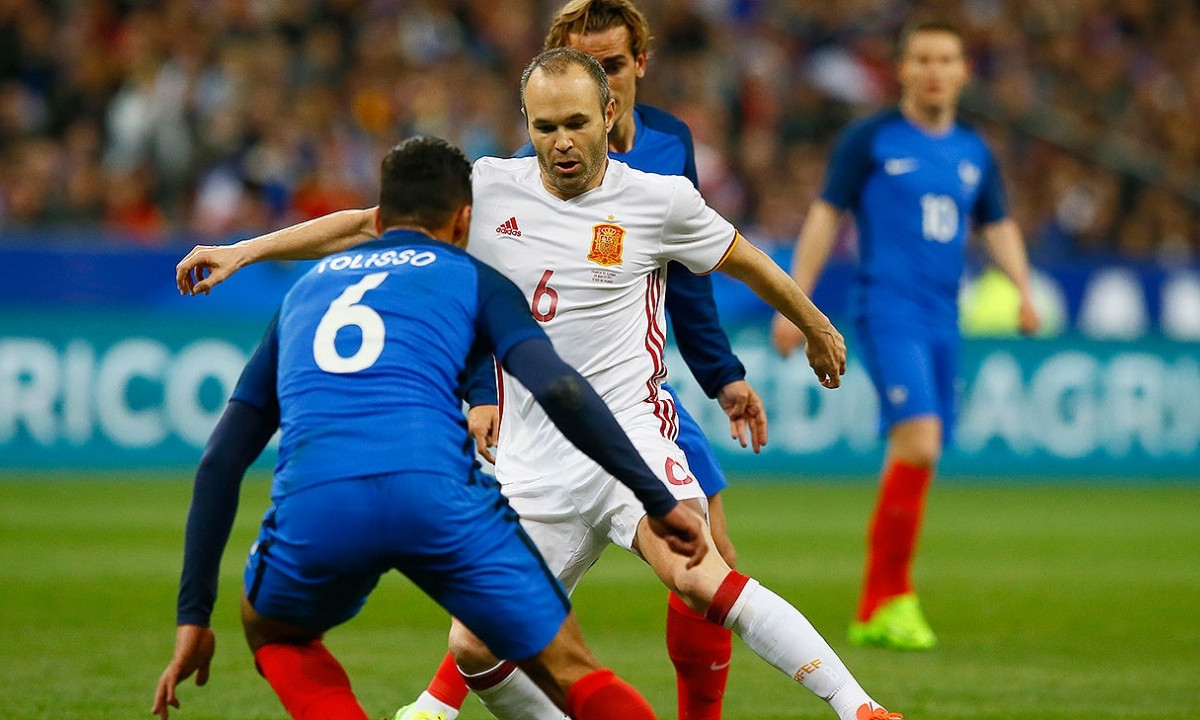
Ever wondered how Spain and France stack up against each other? These two European giants boast rich histories, vibrant cultures, and stunning landscapes. Spain, known for its flamenco, tapas, and sunny beaches, contrasts sharply with France's reputation for fine wine, haute cuisine, and iconic landmarks like the Eiffel Tower. Both countries offer unique experiences, from Spain's lively festivals to France's romantic streets. Whether you're a history buff, a foodie, or an adventure seeker, comparing these nations reveals fascinating differences and surprising similarities. Ready to dive into the world of España vs. Francia? Let's explore 25 intriguing facts that highlight what makes each country special.
España Vs Francia: A Tale of Two Nations
Spain and France, two neighboring countries in Europe, share a rich history and vibrant cultures. Despite their proximity, they have unique characteristics that make them fascinating to compare. Let's dive into some intriguing facts about these two nations.
Historical Highlights
Both countries boast a wealth of historical events and landmarks. Here are some key historical facts that set them apart.
- Spain's Alhambra Palace in Granada is a stunning example of Moorish architecture, built in the 13th century.
- France's Palace of Versailles, constructed in the 17th century, symbolizes the absolute monarchy of the Ancien Régime.
- Spain was a dominant global empire in the 16th and 17th centuries, known as the Spanish Golden Age.
- France experienced its own golden age during the reign of Louis XIV, known as the Sun King.
- The Spanish Civil War (1936-1939) was a significant conflict that led to the rise of Francisco Franco's dictatorship.
- The French Revolution (1789-1799) dramatically changed the course of French history, leading to the end of the monarchy.
Cultural Richness
Spain and France are cultural powerhouses, each with its own unique contributions to art, music, and literature.
- Flamenco, a passionate dance and music genre, originated in the Andalusian region of Spain.
- France is the birthplace of ballet, with the first ballet company established in the 17th century.
- Spain's Pablo Picasso and Salvador Dalí are two of the most influential artists of the 20th century.
- France's Claude Monet and Edgar Degas were pioneers of the Impressionist movement.
- Spain celebrates La Tomatina, a massive tomato fight held annually in the town of Buñol.
- France is famous for its Bastille Day, celebrated on July 14th, marking the French Revolution's beginning.
Culinary Delights
Food is a significant part of both Spanish and French cultures, with each country offering a distinct culinary experience.
- Spain is known for its tapas, small savory dishes typically served with drinks.
- France is renowned for its pastries, including croissants, éclairs, and macarons.
- Paella, a rice dish with seafood or meat, is a staple of Spanish cuisine.
- France's coq au vin, a chicken dish cooked in red wine, is a classic French meal.
- Spain produces some of the world's best olive oil, particularly from the Andalusian region.
- France is famous for its cheese, with over 1,000 varieties, including Brie and Camembert.
Language and Literature
The languages and literary traditions of Spain and France have left a lasting impact on the world.
- Spanish, spoken by over 460 million people, is the second most spoken language globally.
- French, spoken by around 275 million people, is an official language in 29 countries.
- Spain's Miguel de Cervantes wrote "Don Quixote," considered one of the greatest works of fiction ever.
- France's Victor Hugo authored "Les Misérables," a monumental novel of the 19th century.
- The Spanish language has a rich tradition of poetry, with poets like Federico García Lorca.
- French literature boasts influential writers like Marcel Proust, known for "In Search of Lost Time."
Modern Day
In contemporary times, Spain and France continue to influence global culture, politics, and sports.
- Spain's La Liga is one of the top football leagues in the world, home to clubs like FC Barcelona and Real Madrid.
These facts highlight the unique and shared aspects of Spain and France, showcasing their rich histories, vibrant cultures, and lasting legacies.
Final Thoughts on España vs Francia
Spain and France, two European powerhouses, offer a rich tapestry of history, culture, and cuisine. Spain dazzles with its flamenco, tapas, and vibrant festivals. France enchants with its art, wine, and iconic landmarks like the Eiffel Tower. Both nations have left indelible marks on world history, from Spain's Age of Exploration to France's revolutionary spirit. Their languages, though distinct, share Latin roots, making them cousins in the linguistic family. Whether you're drawn to Spain's sunny beaches or France's romantic streets, both countries promise unforgettable experiences. So, whether you're planning a trip or just curious, knowing these facts can deepen your appreciation for these fascinating nations. Dive into their stories, savor their flavors, and let their unique charms captivate you.
Was this page helpful?
Our commitment to delivering trustworthy and engaging content is at the heart of what we do. Each fact on our site is contributed by real users like you, bringing a wealth of diverse insights and information. To ensure the highest standards of accuracy and reliability, our dedicated editors meticulously review each submission. This process guarantees that the facts we share are not only fascinating but also credible. Trust in our commitment to quality and authenticity as you explore and learn with us.
